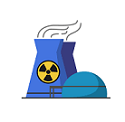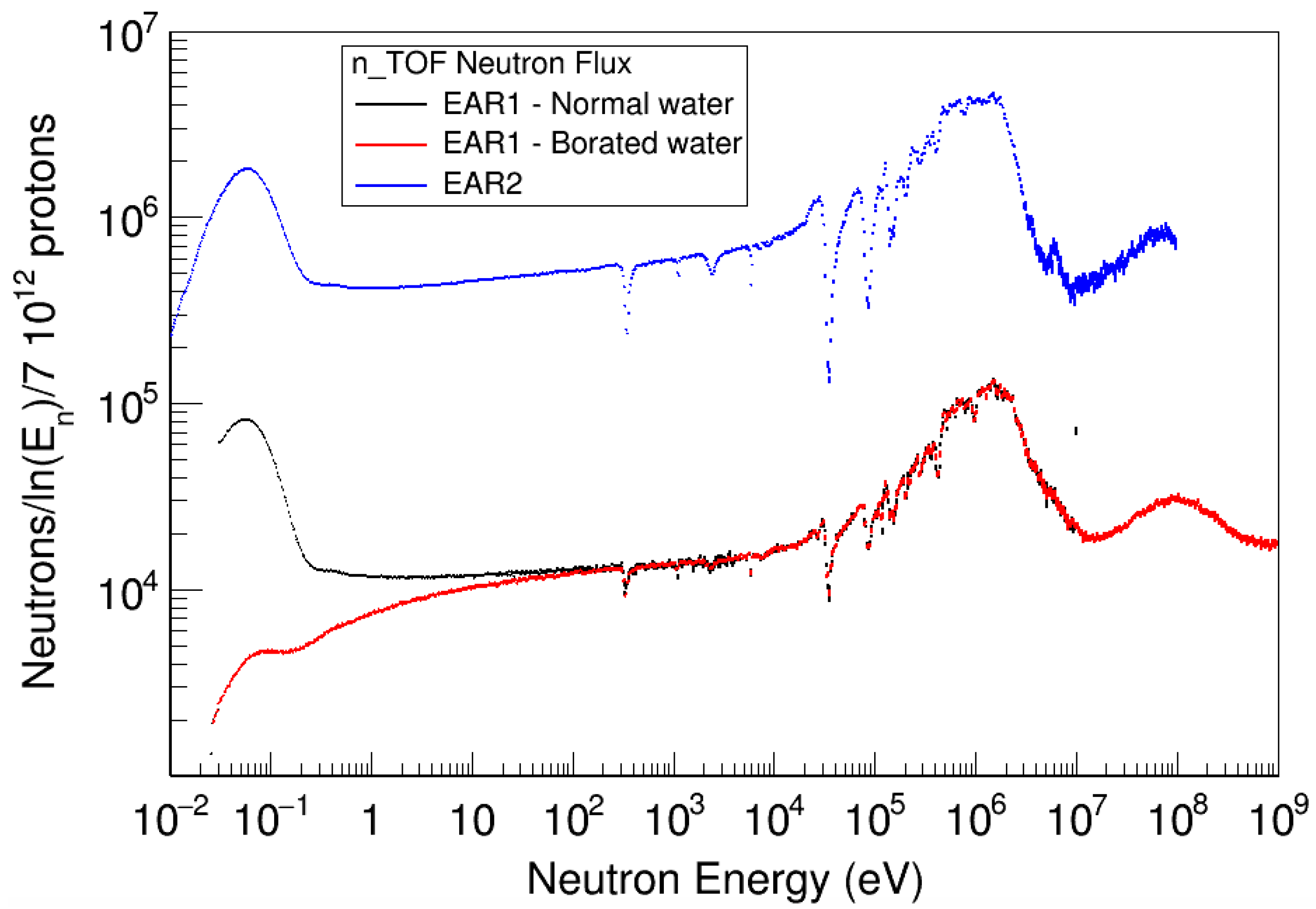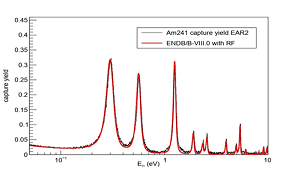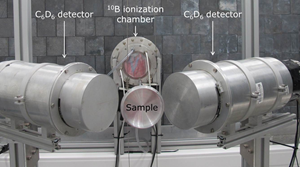Talk To Us
Keep in touch
Let us know if you require futher information

Cross section measurements

Cross section measurements for reactors

HPGe detection system for inelastic scattering reactions

The present project continues the efforts of the IFIN-HH research team to actively contribute through its expertise in the field of nuclear instrumentation and reaction cross sections measurements, to the increase of the diversity of the topics addressed and to the improvement of the accuracy of the nuclear data provided by the n_TOF collaboration. Together with the other 150 members of the collaboration, through the experiments carried out at the facility, we aim to acquire a better understanding of the nuclear reaction mechanisms and, at the same time, to aid the typical applications of basic nuclear physics research (next generation nuclear reactors, medicine, environmental protection, etc.). In doing this, we transfer back to society these scientific advancements leading to technical progress and ultimately to an increased quality of life.
n_TOF is the main neutron source of CERN, consisting of a lead target bombarded by 10-GeV protons. For performing experiments, the n_TOF users have at their disposal three experimental areas with complementary properties of the neutron flux. On account of its long flight path (185 m), the first experimental area (EAR1) is used especially for experiments that require a good incident energy resolution. In contrast, thinner targets - made of rare or even instable radioisotopes - are studied in the experimental area 2 (EAR2), which is characterized by a flux 40 times higher, as a result of its shorter flight path (20 m). The third experimental area is located in the vicinity of the neutron-producing target and it is used to study the properties of various materials in intense neutron fields.
The activities foreseen in the current project follow up the two directions that now can be considered representative for our research group: first - the technical developments needed for carrying out measurements of neutron inelastic reactions cross section and second, continuing the neutron capture program with a new experimental proposal. Up to now, in order to achieve the first objective, we have focused our efforts exclusively on adapting the HPGe detectors to the specific conditions found at n_TOF. Within the new project we also plan to investigate the response of other detection systems that could be used in experiments that require high efficiency in detecting high energy γ rays. Similar to the study performed for HPGe detectors, the response of these detectors to a high flux of fast neutrons will be verified by performing GEANT4 simulations. The results of the simulations will be validated by tests with radioactive sources or at other facilities that can deliver fast neutron beams. The study of HPGe detectors will continue with a new test in 2022, this time with dedicated beam time. The test will start by checking the level of the background radiation, then the neutron-induced inelastic reaction on the 7Li and 56Fe samples will be measured. These experiments should show the feasibility of measuring inelastic scattering cross sections at n_TOF using HPGe detectors. The second direction of research it will continue by preparing and proposing a new experiment.



The neutron capture cross section on 241Am still requires new measurements for nuclear data evaluations as such data are very scarce at thermal energies (below 300 eV) and, also, they are partially discrepant. This motivated our group to propose and perform a new neutron capture experiment at n_TOF. The main goal was to extend the previous results for 241Am to the resolved resonance region, below 300 eV and to improve the data uncertainties in the thermal region by performing the experiment in EAR2. The latter is better suited for highly radioactive samples because of a much better capture-to-background signal ratio mainly due to an increased neutron flux (a factor 25) and an additional factor 10 for the smaller time window needed to cover the same energy range. During the new 241Am(n, γ) measurement special care was taken in quantifying all the relevant background components by means of several dummy targets and the use of suitable neutron filters. Well-known black resonances on Au, Ag, U, Ir and Rh were used during data analysis for absolute normalisation of the extracted capture yields. The C6D6 detectors used for this experiment have important pros and cons but overall, they were a suitable choice for the experimental conditions in EAR2 at n_TOF. The Romanian team is in charge of the data analysis. After gaining the basic know-how from our CEA and EC-JRC collaborators and the initial raw data reduction/selection, the data analysis advanced greatly. Top figure shows our preliminary capture yield broadened with the latest resolution function and the ENDF evaluation. We can see there is still some background present, maybe related to the background subtraction from the dummy sample. Also, both curves are apparently not exactly on the same energy scale. We mention that there is no weighting function applied since the normalization is not yet performed at this stage.


In February 2021, together with our Greek collaborators from University of Ioannina (UoI) and National Technical University of Athens (NTUA), we submitted a Letter of Intent (LoI) to test the HPGe detector with dedicated beam and it has been accepted by the INTC. During the Long Shutdown the DAQ of n_TOF was upgraded, therefore several tests were performed for determining the best parameters (sampling rate and digitizer range) for achieving the optimum energy resolution. The signals from the detector were recorded in parallel with conventional electronics and a multichannel analyser (MCA), thus a direct comparison between the performances of the analogical and digital pulse processing could be done. During the test, a 152Eu radioactive source was placed 20 cm from the detector to prevent the appearance of summing effects. The wide range of γ-ray energies emitted by the source allowed us to address the linearity behaviour of the PSA. The best results were obtained when the preamplifier signal is first converted into a step signal using a recursive formula. Using Monte-Carlo simulations, the performances of the PSA code were tested for different detector-target configurations. Simulated traces were created based on the energy deposited in the crystal and time information returned by GEANT4 simulation program, in which the detector geometry and neutron flux characteristics were included. By varying the detector-sample distance and the sample thickness, a strong correlation between the count rate and the FWHM for the peaks retrieved by the PSA was observed. For the two physical cases considered in the LoI, the optimum thicknesses were found to be 1mm for 56Fe sample and 1cm for LiF2 sample.


The scientific visit of A. Oprea at EC-JRC-GELINA, within the Horizon2020 transnational access project ARIEL, was focused on time-of-flight transmission and capture measurements at GELINA. This scientific visit (2 months) was approved by the ARIEL PAC last year (2020). Unfortunately, due to the pandemic situation, A. Oprea was able to travel to GELINA only starting with September 2021. The measurement on 103Rh collected data for about 15 days and it was performed at the 12-m measurement cabin on flight path 5 making use of the moderated neutron flux and with the accelerator working at 50 Hz. We measured with several samples - Au, Pb (for normalisation), Cd (for flight path length determination) and 103Rh - and we also took many beam on/off, samples in/out and γ-energy calibration runs. The 103Rh target has a diameter of 80 mm, 0,26 mm thickness and weighs 15.663 g. Neutron-induced capture γ rays were detected using two low efficiency C6D6 liquid scintillators which allow us to extract time and amplitude information for each γ ray event. The incident neutron flux was monitored using a Frisch-gridded ionization chamber based on the 10B(n,α) neutron cross section standard and placed 80 cm before the sample (as seen in top figure). During the (very) preliminary data analysis, the neutron time of flight was derived from the time difference between the stop signal times - obtained from the anode impulse of the C6D6 photomultiplier and/or from the 10B-loaded ionization chamber - and the start signal (given each time a new electron burst hits the neutron-producing target). The future main steps of the data analysis will allow us to quantify the total number of capture-induced γ rays and then, together with the neutron fluence given by the ionization chamber, to determine the capture yields. The main objective of this experiment is to use the latter to determine resonance parameters for 103Rh in a least squares adjustment to the data using a resonance shape analysis code, like REFIT.
Project deliverables
Let us know if you require futher information